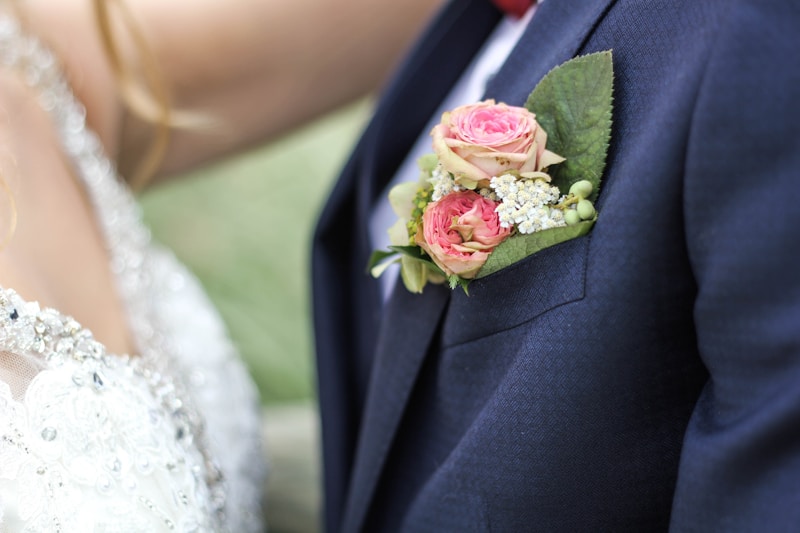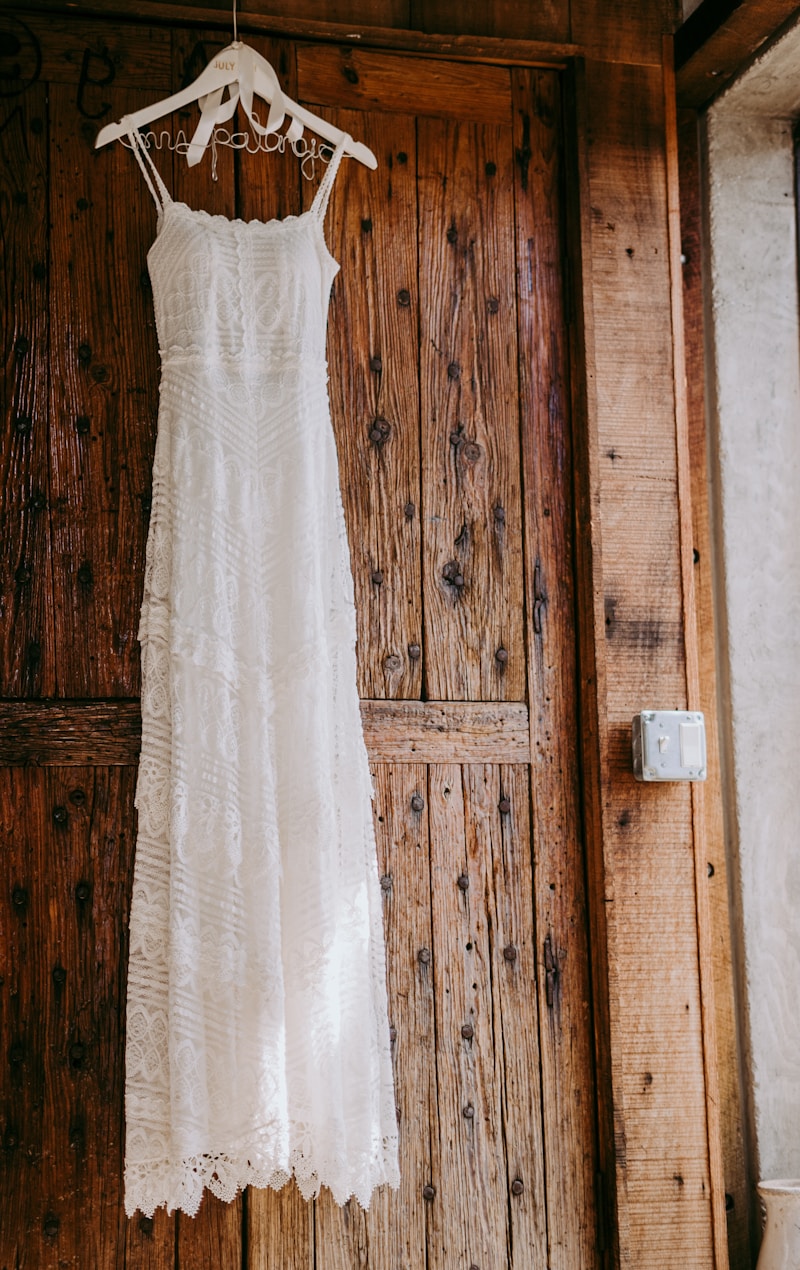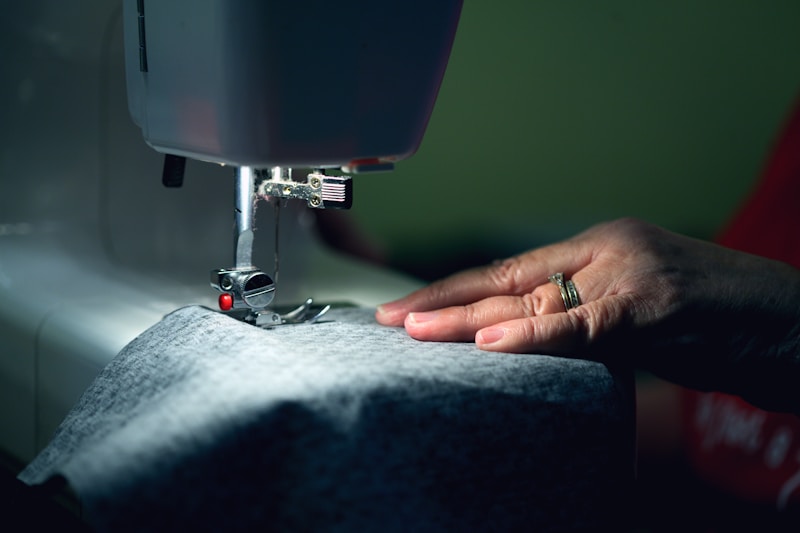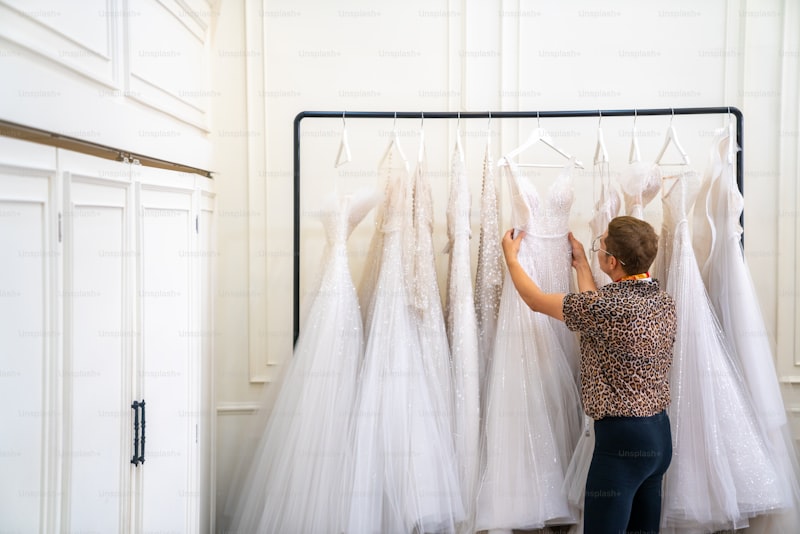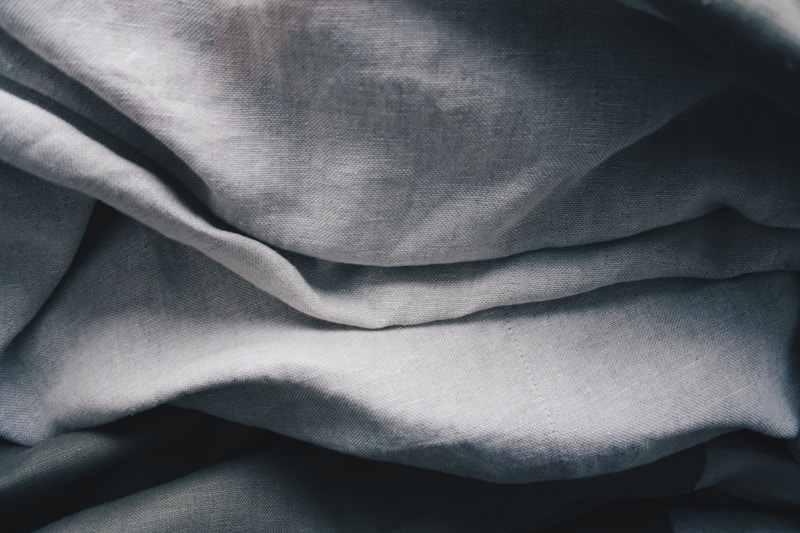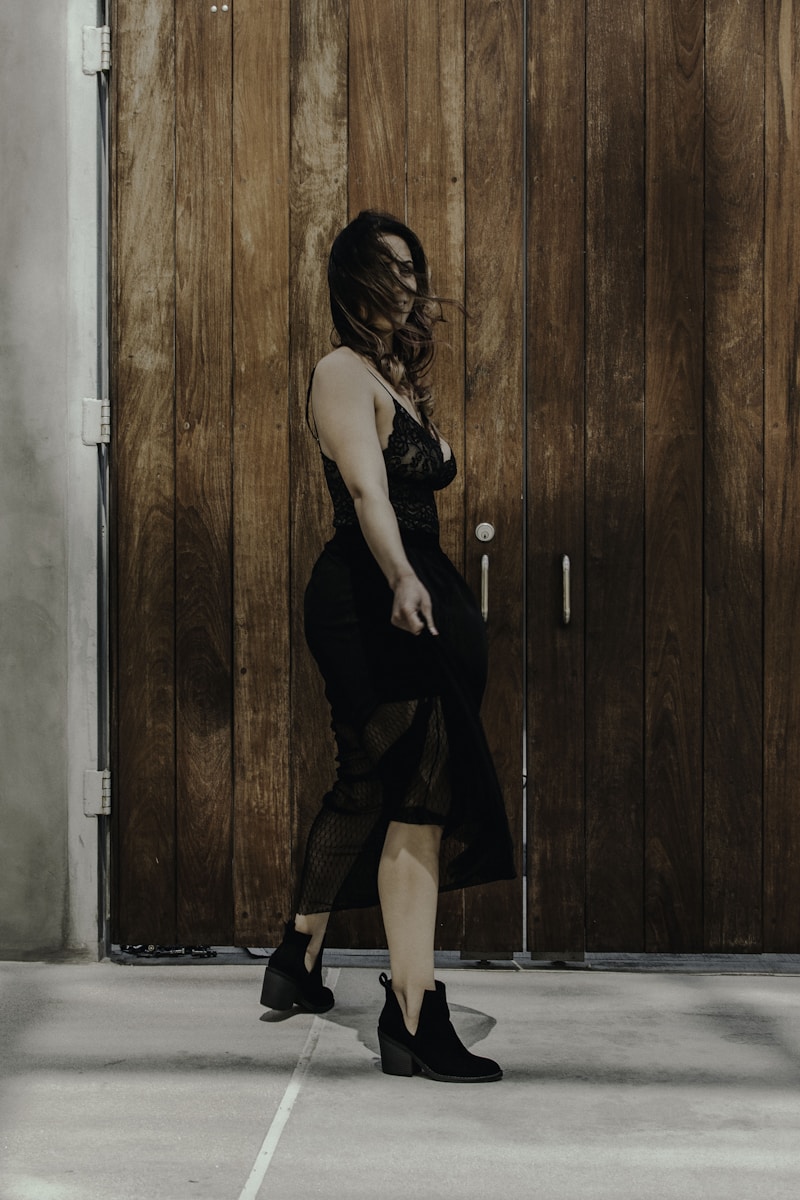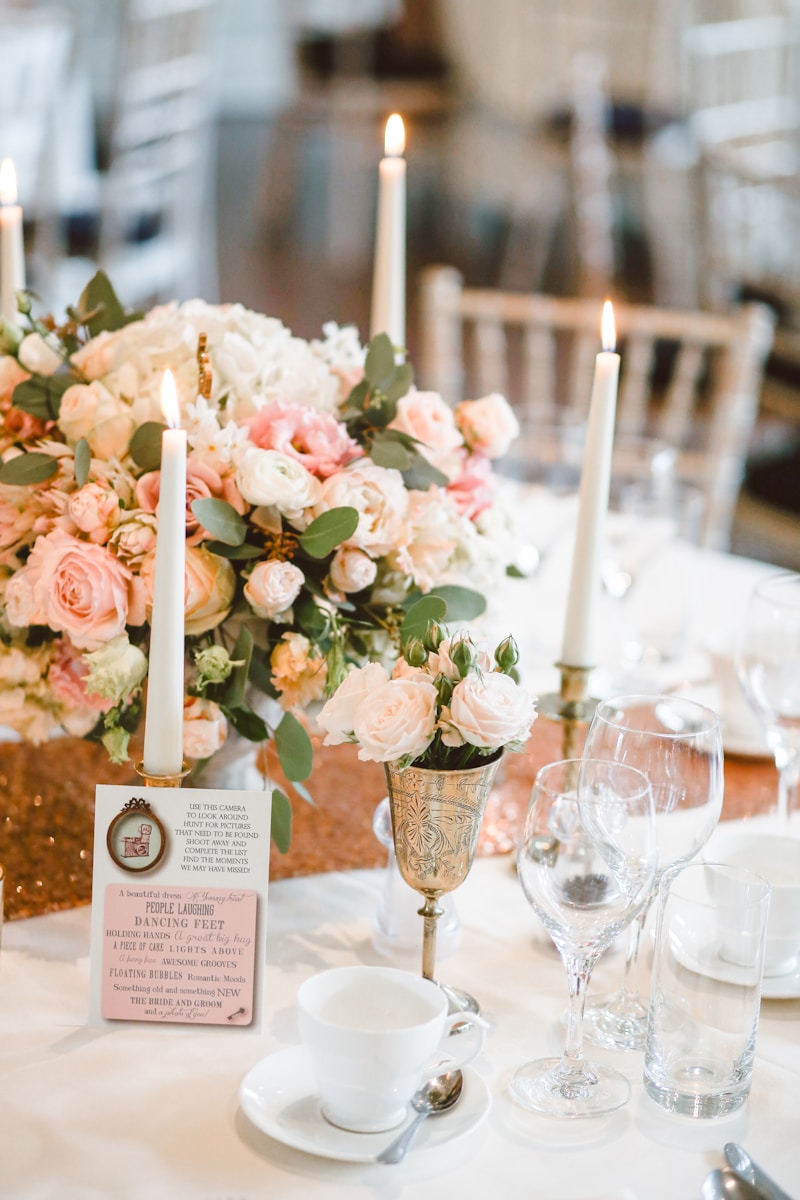Understanding Wedding Dress Terminology: A Comprehensive Guide for Brides-to-Be
Understanding Wedding Dress TerminologyEvery bride dreams of her perfect wedding dress. However, navigating the world of bridal fashion can be overwhelming, especially with the plethora of terms used in the industry. This guide aims to demystify wedding dress terminology, helping brides-to-be confidently express their preferences and make informed decisions.The Basics of Wedding Dress TerminologyTo start, it's essential to understand some key terms that are frequently used in describing wedding gowns:TermDefinitionA-LineA silhouette that is fitted at the bodice and flows out gently to the ground, resembling the shape of the letter 'A.'Ball GownA classic style that features a fitted bodice and a full, voluminous skirt, perfect for a fairy-tale wedding.MermaidA fitted dress that flares out at the knee, emphasizing the curves of the body.SheathA slim-fitting dress that falls straight down from the neckline to the hem, offering a contemporary look.LaceA delicate fabric made of threads woven in complex patterns, often used for embellishments.Popular Styles and SilhouettesUnderstanding the different styles and silhouettes will help you choose the right wedding dress for your body type and personal style. Below are some popular styles:A-Line DressesA-Line dresses are a favorite among many brides due to their flattering silhouette. They are versatile and can work for various wedding themes, from a vineyard ceremony in California to a formal affair in New York City. This style suits a...
Feedback from Real Brides on Dress Choices: What Every Bride Needs to Know
Discovering the Best Dress Choices Through Real Brides’ ExperiencesChoosing the perfect wedding dress is a pivotal moment in every bride's journey to the altar. The quest for the ideal gown can be overwhelming, but what if you could glean insights from real brides who have walked down that path? In this article, we will explore the invaluable feedback from real brides on dress choices, helping you make an informed decision. We will also delve into common questions brides have regarding dress selection, styling, and ways to ensure your gown mirrors your personality and wedding theme.The Importance of Seeking FeedbackMany brides find themselves lost in the sea of options when it comes to wedding dresses. With a plethora of styles, fabrics, and designers, it’s crucial to hear directly from those who have experienced the process firsthand. Feedback from real brides provides a realistic perspective on various dress types, the shopping experience, and how to avoid common mistakes. Below, we summarize key areas where real brides have shared their insights regarding dress choices.Areas of FeedbackBrides' Insights1. Dress StylesMany brides preferred A-line or ball gown styles for their flattery and comfort.2. Fabric ChoicesLace and chiffon were commonly favored for their elegance and breathability.3. BudgetBrides shared the importance of adhering to a budget to avoid financial stress.4. Shopping ExperienceBrides emphasized the significance of a supportive shopping environment.5. Custo...
Showcasing Your Personality through Dress: A Guide to Fashion as Self-Expression
IntroductionFashion is not just about clothing; it is a powerful medium for self-expression. The way we dress can tell a lot about our personalities, moods, and even our aspirations. This article explores how to showcase your personality through dress, creating a unique style that resonates with who you are. Whether you’re bold, laid-back, or somewhere in between, understanding the connection between your fashion choices and your persona can help you curate a wardrobe that truly reflects your identity.The Importance of Personal StyleYour personal style is an extension of your individuality. It conveys your tastes, your values, and your social identity. Clothing can give people insights into your interests and lifestyle. For instance, a creative person may choose unconventional patterns and vibrant colors, while someone with a more pragmatic nature might opt for minimalistic designs and neutral tones. Understanding the significance of personal style is the first step toward showcasing your personality through dress.Identifying Your StyleBefore you can begin to showcase your personality through dress, you need to identify your style. Here are some steps to help you figure this out: Reflect on Your Interests: Think about what hobbies and activities you enjoy. Your clothing can often reflect these interests. Explore Fashion Icons: Look at celebrities or public figures whose styles you admire. Analyze what aspects resonate with you. Consider Your Lifestyle: Your daily routine i...
Understanding Fabric Preservation Techniques: A Comprehensive Guide
Introduction to Fabric Preservation TechniquesFabric preservation is a crucial aspect that allows individuals to maintain the quality and longevity of their textiles. In the world of art, fashion, and household items, understanding the appropriate techniques for fabric preservation can dramatically impact the appearance and durability of your favorite pieces. This article aims to delve deeply into various fabric preservation techniques, their importance, and the best practices to adopt for effective preservation.The Importance of Fabric PreservationPreserving fabrics is not merely a choice; it is a necessity. Over time, fabrics can deteriorate due to environmental factors, wear and tear, and improper storage. The following points highlight why fabric preservation is essential:Longevity: Proper preservation techniques can extend the life of textiles, making them available for future generations.Value Retention: For collectors and enthusiasts, maintaining the condition of fabrics preserves their monetary and sentimental value.Aesthetic Appeal: Well-preserved fabrics retain their original beauty, enhancing the overall appearance of any collection or household.Common Fabric Preservation TechniquesHere, we will explore various fabric preservation techniques in detail, giving you insight into how to effectively preserve your fabrics.1. Cleaning and Preparing FabricsBefore you can effectively preserve a fabric, it's essential to clean it properly. The cleaning process varies based o...
Essential Tips for Wedding Dress Maintenance
Preserving the Beauty of Your Wedding DressYour wedding dress is not just a garment; it's a symbol of love, commitment, and unforgettable moments. Ensuring that your dress remains in pristine condition for years to come takes careful maintenance and attention. In this article, we will explore essential tips for wedding dress maintenance, covering everything from storage techniques to cleaning methods.Why Wedding Dress Maintenance is ImportantWedding dresses can be delicate, often made from fine fabrics such as silk, tulle, and lace. Without proper care, these materials can degrade, become discolored, or even suffer irreversible damage. Here are several reasons why maintaining your wedding dress is crucial: Sentimental Value: Your wedding dress is filled with memories of one of the most important days of your life. Keeping it in excellent condition allows you to cherish those memories. Future Generations: Many brides choose to pass their wedding dresses down to their daughters or other family members. Proper maintenance ensures it remains a treasure for future generations. Resale Value: If you consider selling your dress in the future, good condition can significantly increase its resale value.Essential Maintenance Tips1. Cleaning Right After the WeddingOne of the most critical tips for wedding dress maintenance is getting your dress cleaned shortly after your wedding. Stains from food, drinks, or even the environment can set and become challenging to remove if left u...
Essential Cleaning Methods for Delicate Fabrics: A Comprehensive Guide
When it comes to caring for delicate fabrics, the right cleaning methods can make all the difference in preserving their beauty and longevity. Whether you own silk dresses, cashmere sweaters, or lace tablecloths, understanding how to clean these materials properly is essential. This article delves into the best cleaning methods for delicate fabrics, ensuring your favorite pieces remain in pristine condition while answering some common related questions.Understanding Delicate FabricsDelicate fabrics, such as silk, chiffon, lace, and cashmere, require special care due to their intricate weaves and lightweight constructions. Unlike durable materials, these fabrics can be easily damaged by standard washing techniques or harsh chemicals. Here are some reasons why understanding cleaning methods for delicate fabrics is crucial: Preservation of Fabric Integrity: Proper cleaning can help maintain the texture and color quality. Prevention of Damage: Using the wrong method can lead to shrinkage, tearing, or fading. Longevity: Correct cleaning practices can prolong the life of luxury items.Common Delicate FabricsFabric TypeCharacteristicsCommon UsesSilkSmooth, lustrous, and lightweightDresses, blouses, tiesChiffonSheer, airy, and slightly crinkledEvening gowns, scarvesLaceIntricate, open weaveTablecloths, bridal wearCashmereSoft, warm, and luxuriousSweaters, wrapsBest Cleaning Methods for Delicate FabricsCleaning delicate fabrics can be daunting, but with the right methods, you ...
Preserving Your Gown for Future Generations: A Comprehensive Guide
Introduction to Gown PreservationYour gown, whether it be a wedding dress, prom dress, or heirloom garment, carries immense sentimental value. As time passes, the risk of wear and tear increases, making it essential to think about preserving your gown for future generations. This guide will explore the various methods and tips to keep your cherished fabric in pristine condition.The Importance of Gown PreservationGowns are not just garments; they are memories encapsulated in fabric. Preserving them ensures that future generations can experience the beauty and nostalgia associated with these dresses. By protecting your gown, you also sustain family traditions and stories that bind generations together. Here are some benefits of gown preservation: Sentimental Value: Keeps the memories alive. Aesthetic Appeal: Maintains the beauty of the garment. Financial Investment: Protects the value of the dress as an asset.Factors That Affect Gown LongevityUnderstanding the factors that can age or damage your gown is crucial. Here are the main elements:FactorImpactLight ExposureFades fabric color and weakens fibers.HumidityEncourages mold growth and fabric damage.PestsCan chew through delicate materials.Improper CleaningCan lead to irreversible staining and wear.Steps for Preserving Your GownTo ensure that your gown remains in excellent condition, follow these essential steps:1. Cleaning Your GownBefore storing, it’s vital to have your gown cleaned properly. Avoid home cleaning meth...
Storing Your Dress: Best Practices for Long-Lasting Preservation
When it comes to truly cherished garments, such as wedding dresses or vintage pieces, knowing the best practices for storing your dress can ensure that it remains in pristine condition for years to come. Whether you're dealing with delicate fabrics or ensuring seasonal clothing stays fresh, understanding how to properly store your dress is essential.Understanding the Importance of Proper Dress StorageThe way you store your dress can significantly affect its condition over time. Improper storage can lead to damage from light, humidity, and pests, which can cause irreversible harm to your favorite pieces. This article will guide you through the best practices for storing your dress, ensuring it retains its beauty.Choosing the Right LocationThe first step in storing your dress is selecting the appropriate space. A few key factors to consider include: Temperature Control: It’s best to choose a location with a stable temperature. Extreme temperatures can lead to fabric degradation. Humidity Levels: Aim for a low-humidity area to prevent mold and mildew growth. Light Exposure: Keep your dress away from direct sunlight to avoid fading and discoloration.Recommended Storage Locations Location Description Closet A dark, temperature-controlled closet is ideal for most types of dresses. Storage Box Using a breathable storage box can provide protection from pests and dust. Bags A cotton garment bag can protect delicate fabrics from dust while allowing airf...
The Importance of Professional Wedding Dress Cleaning: Preserving Your Cherished Memories
Why Professional Wedding Dress Cleaning MattersYour wedding dress is not just a piece of clothing; it is a symbol of love, commitment, and one of the most memorable days of your life. After the wedding day, many brides find themselves wondering about the best way to care for their stunning dress. This is where professional wedding dress cleaning comes into play. In this article, we will explore the essential reasons why opting for professional services is crucial for preserving your wedding gown.Understanding Wedding Dress FabricsWedding dresses come in various fabrics, each requiring different care techniques. From delicate lace to luxurious silk and satin, it’s important to understand how they react to stains and cleaning methods. Here are some common fabrics and their care guidelines:Fabric TypeCare TipsLaceDry clean only; avoid water to prevent stretching.SilkGentle dry cleaning is recommended to prevent discoloration.SatinProfessional cleaning is essential to maintain its sheen.TulleCan be washed with care at home but best left to experts.The Risks of DIY CleaningMany brides consider washing their wedding dress at home to save money. However, DIY cleaning can lead to irreversible damage. Here are several risks associated with at-home cleaning:Stains: Not all stains are the same, and some may require special treatment. Improper washing can set stains, making them impossible to remove.Water Damage: Excessive water can ruin the fabric, causing it to lose shape or color.Wron...
Post-Wedding Dress Care for Longevity: Preserving Your Special Memories
IntroductionYour wedding dress is more than just a garment; it's a symbol of love, joy, and cherished moments. After the big day, many brides wonder how to care for their wedding dress to ensure its longevity. This article will guide you through essential tips and best practices for post-wedding dress care for longevity, allowing you to preserve the beauty of your dress for years to come.Why is Post-Wedding Dress Care Important?Caring for your wedding dress post-event is crucial for several reasons. Firstly, your dress has likely been exposed to elements that can cause damage, such as perspiration, makeup, and even food stains. Secondly, proper care ensures that your dress maintains its structure and beauty, ready to be cherished or showcased on special occasions or passed down through generations. Finally, a well-preserved wedding dress can increase in value over time, making it not only a sentimental piece but also a potential heirloom.Common Concerns About Wedding Dress PreservationBrides often have several questions regarding the care of their wedding dresses. Here are a few common concerns: How soon should I clean my wedding dress? What is the best cleaning method for different fabrics? Should I consider professional preservation? How can I store my wedding dress safely?Steps for Proper Post-Wedding Dress CareFollow these essential steps for effective post-wedding dress care:1. Clean Your Dress PromptlyAfter the wedding, it's crucial to clean your dress as so...
Common Mistakes in Dress Storage: How to Keep Your Wardrobe in Top Shape
Understanding Proper Dress StorageWe all love our dresses, whether they are elegant evening gowns, casual summer dresses, or business attire. Proper dress storage is crucial to maintain their shape, color, and fabric integrity. However, many of us make common mistakes that can lead to irreversible damage. In this article, we will explore these common mistakes in dress storage and provide valuable tips to ensure your wardrobe stays in excellent condition.Why Dress Storage MattersAppropriate storage methods can significantly extend the lifespan of your dresses. When dresses are improperly stored, they can suffer from stains, wrinkles, and even mold growth. For those investing in luxury dresses, the need for proper storage becomes even more critical. In this section, let’s look at some common dress storage issues:Common MistakesConsequencesUsing Plastic CoversTrapped moisture leading to mildewHanging on Thin HangersLoss of shape and stress on seamsIgnoring Fabric CompositionFabric damage or fadingStoring in Damp AreasMold and odorsNot Cleaning Before StorageStains becoming permanentCommon Mistakes in Dress Storage1. Using Plastic CoversWhile it may seem like a good idea to store your dresses in plastic covers, they can trap moisture and humidity, which may lead to mildew. Instead, opt for breathable cotton garment bags that allow the fabric to breathe, ensuring that your dresses stay fresh and protected.2. Hanging on Thin HangersUsing thin wire hangers can cause your dresses to ...
Identifying Stains and Their Treatments: A Comprehensive Guide to Restoration
Stains are an inevitable part of our daily lives, affecting our clothes, furniture, and carpets. While some stains can be easily removed, others may require in-depth knowledge of their origins and appropriate treatments. This article aims to provide an extensive overview of identifying various stains and their respective treatments, ensuring you can handle the most stubborn marks with confidence.Understanding Different Types of StainsStains can be broadly categorized into two main types: organic and inorganic. Organic stains originate from natural substances, while inorganic stains are usually caused by chemicals or synthetic materials. Understanding the source of a stain is crucial in determining the proper treatment method.Type of StainSourceCommon ExamplesTreatment MethodOrganicNatural substancesFood, beverages, bodily fluidsWater, soap, specialized cleanersInorganicChemicals/syntheticsInk, paint, bleachSolvents, specific chemical removersCommon Stains and How to Identify ThemIdentification is the first step toward effective treatment. Below are some common stains and key indicators that can help determine their nature.1. Food StainsFood stains come in various forms and can often be identified by their color and texture. For instance, tomato sauce typically leaves a bright red mark, while chocolate may leave a dark brown smear. The treatment usually involves:Blotting the stain gently with a cloth.Applying cold water to prevent the stain from setting.Using a mixture of liqu...
